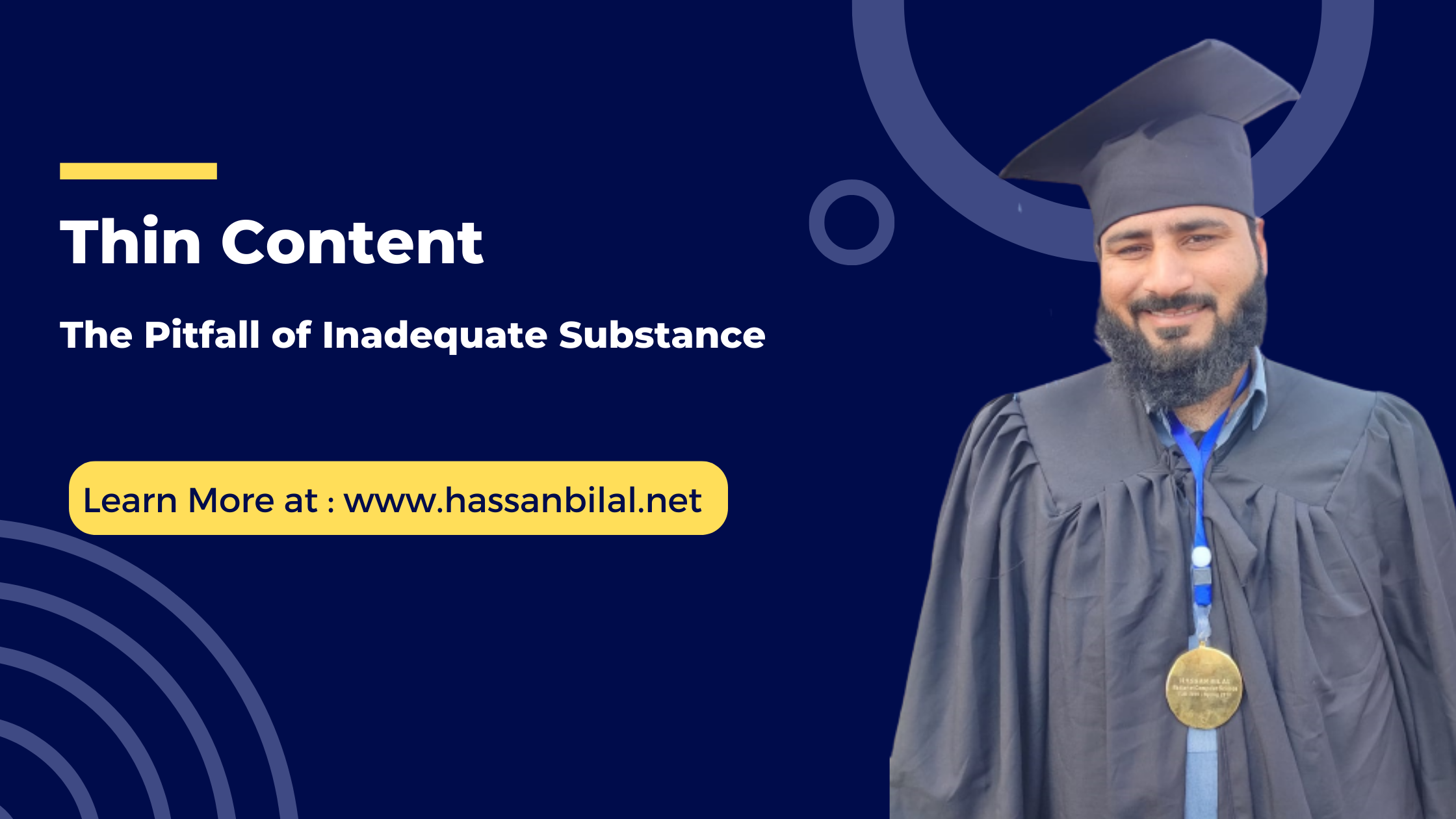Search Engine Optimization & Marketing
Thin Content: The Pitfall of Inadequate Substance

Thin content is web content that is of low quality or low value. It is often created for the sole purpose of ranking high in search results, without providing any real value to users.
Understanding the Significance of Thin Content
Negative Impact on Search Engine Rankings
Thin Content poses a significant threat to your website’s search engine rankings. Search engines prioritize delivering high-quality, relevant, and valuable content to users. When your webpages lack substance and fail to provide meaningful information, search engines may perceive them as low-quality or irrelevant. This can result in lower rankings, decreased visibility, and reduced organic traffic to your website.
Poor User Experience
Thin Content also has a direct impact on user experience. Users visit websites with the expectation of finding valuable and informative content that meets their needs. When they encounter thin, shallow, or insufficient content, their experience is compromised. Users may become frustrated, bounce back to the search results, or seek information from alternative sources. This not only hampers user satisfaction but also diminishes the credibility and trustworthiness of your website.
Increased Risk of Penalties
Search engines, such as Google, are vigilant in combating low-quality content and spammy practices. Thin Content is often associated with spammy tactics, including keyword stuffing, content scraping, and doorway pages. Engaging in such practices puts your website at risk of penalties, including manual actions or algorithmic demotions. It is crucial to address Thin Content to maintain a positive online reputation and avoid potential penalties.
Essential Techniques to Identify and Address Thin Content
Conduct a Content Audit
Perform a comprehensive content audit to identify webpages that exhibit Thin Content. Analyze factors such as word count, relevance, uniqueness, and user intent. Use tools like Google Analytics and Search Console to identify pages with low engagement metrics, high bounce rates, or low organic traffic. This enables you to pinpoint webpages that require attention and improvement.
Enhance Content Quality
Focus on improving the quality of your content by adding substance, depth, and value. Conduct thorough research and provide comprehensive information that fulfills the user’s intent and answers their queries. Incorporate relevant keywords naturally and strategically throughout the content. Optimize headings, subheadings, and bullet points to enhance readability and user experience.
Update and Expand Existing Content
Revitalize your Thin Content by updating and expanding existing webpages. Identify gaps in information and add relevant details to provide a more comprehensive resource for users. Incorporate fresh and up-to-date data, statistics, and case studies to ensure the content remains relevant and valuable. Regularly revisit and refresh thin webpages to maintain their quality and usefulness.
Remove or Consolidate Irrelevant Pages
Identify webpages with minimal or no value and consider removing them from your website. This includes outdated or redundant content, thin product pages, or pages with no traffic or engagement. Alternatively, you can consolidate similar or related pages to create a more comprehensive and informative resource. Redirect any removed or consolidated pages to relevant pages to preserve the flow of link equity and avoid broken links.
Optimize Metadata and Titles
Ensure that each webpage’s metadata and titles accurately reflect the content’s substance and relevance. Craft compelling and keyword-rich titles that entice users to click through to your website. Incorporate relevant keywords in the meta description to provide a concise summary of the content. Well-optimized metadata and titles contribute to improved visibility in search engine results and attract more organic traffic.
Conclusion
Thin Content poses a significant challenge for websites aiming to achieve optimal search engine rankings and provide valuable user experiences. By understanding the implications of Thin Content, conducting content audits, enhancing content quality, updating and expanding existing content, removing or consolidating irrelevant pages, and optimizing metadata and titles, you can combat Thin Content effectively. Prioritize content relevance, substance, and value to establish your website as a reliable and authoritative source of information, ultimately boosting your search engine visibility and user engagement.
